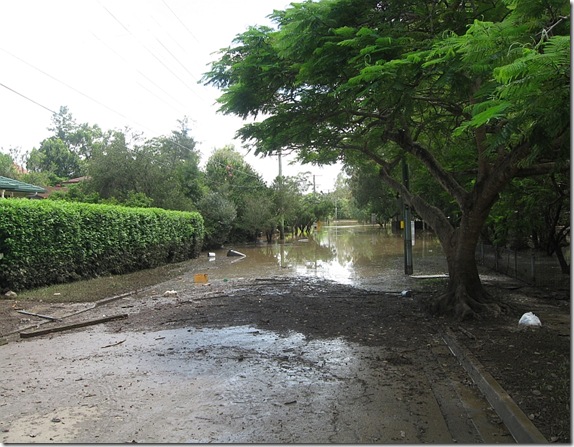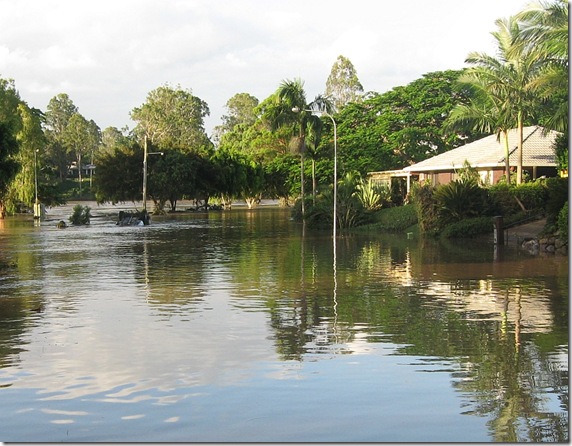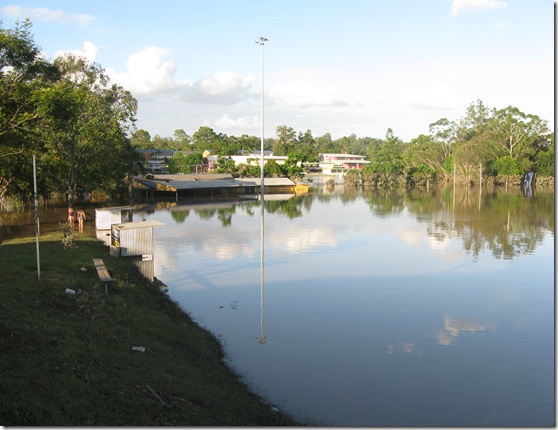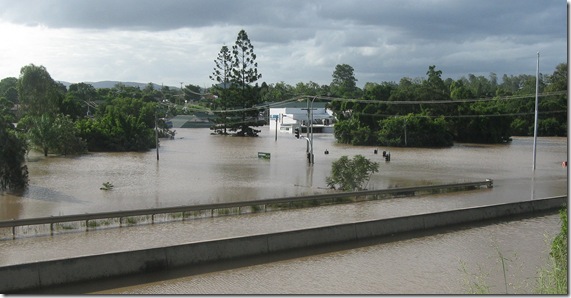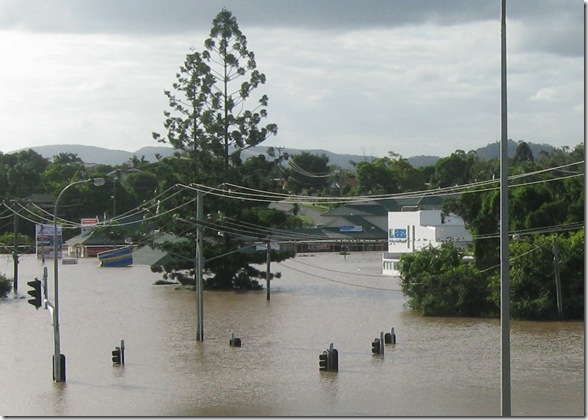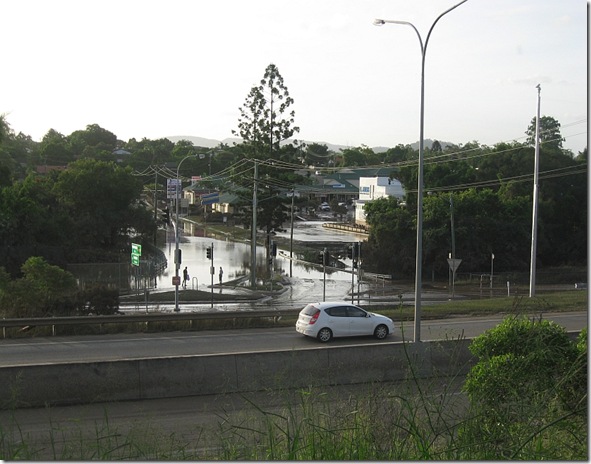Work and money continues to be a major distraction, but I wanted to note:
*
Bad weather, part 1: It's a pretty "good" season for extreme weather that may encourage belief in climate change and political action on carbon emissions. So much so that
Andrew Bolt seemed to have a fleeting moment of doubt last Friday (hinting that the heavy storms in Melbourne and Victoria, on top of the already unusual slow moving Victorian floods, really are "freaky"), but then he obviously had the strong urge to crush any hint of self doubt by a flurry of anti climate change posts over the weekend. I'm not going to link to them; he's an unthinking promoter of every bad argument against sensible precaution, and it's the political influence I'm sure he wields on the grass roots of the Coalition that makes him
not a joke on the issue.
*
Bad weather, part 2: Watching Cyclone Yasi coverage last week really made me a little sorry for journalists who were in the wrong spot (Cairns) for any interesting footage of the approaching storm. It is, in any event, impossible to get good footage of a really bad cyclone, given that no one sensible should be on the street, or even close to the windows, but the media seems not to have realised this yet. Skynew's coverage on the night of the storm was particularly ludicrous, with what seemed an hour of live footage of some smallish palm trees and shrubs being blown about in a motel room courtyard in Bowen being the best they could come up with.
Then, in the morning, it felt a bit anti climatic, given that the media still couldn't get into the worst affected areas.
But I thought the best cyclone damage footage to come out a couple of days later was from the Dunk Island resort. It's hard to imagine how long it will take to look good again, and you don't often see that many denuded trees in one place.
Oddly enough, you'll also find that the first comment following this on Youtube is by a guy who says the resort deserved it because the owner tried to hit on his 17 year old daughter during a recent bad holiday! Just a tad defamatory, I would have thought, and doesn't Youtube exercise any control over its comments section?
*
Bad weather, part 3: I've had a couple of interesting conversations with people affected by the Brisbane flood. One was with the manager of a nice, new block of apartments facing the river on Coronation Drive. These are obviously built with an awareness that the underground car park can flood in a 1 in 100 flood, but the units are above the flood level. The problem is, they still put the electrical power for these buildings in the car park levels too, meaning the block was without power for 2 weeks, and even now that it is back on, the lifts are still awaiting repair! Given that it is about 8 to 10 stories high, (as are many on that stretch of Coronation Drive), this seems an issue which one would have thought the designers (and Council) should think about more carefully.
The second conversation was with a woman who has (or had) a nice house on the Brisbane river. She has lost retaining walls and is worried about pool subsidence, as well as the issue of what to do with a metre or so of mud in her backyard which might be (temporarily) helping to keep the pool in place. Apparently, the Council is suggesting she has to get rid of the mud, but they don't want it back in the river either. This remains an unresolved issue.
*
In praise of animation: I saw Tangled, the Disney animated flick (and said to be the last of their "Princess" movies) and was very impressed. There is one sequence which plays so beautifully, I am not ashamed to say it brought a tear to my eye.
I am not alone in this, even amongst males. (I read - but have lost the link to - some blog review by an American father who said the same; but of course, he might be a big girlie man too.) It is, in a way, surprising that animation can move anyone to tears. But
David Byrne had something interesting to say about this a few years ago:
Malu and I went to see The Incredibles, the new Pixar film about disgruntled retired superheroes. I laughed and cried, as I do at lots of animated movies. I wonder if I get more emotionally involved in animated characters than in films using real actors? Other than Spielberg movies that deliberately work the sentimental buttons it's much easier to identify with drawings than with real people.
Maybe this isn't strange. Maybe the fact that they're drawings makes them more ambiguous, more universal, and easier to identify with. Well, it's true with lots of other things — things that use metaphor, allegory and poetic ambiguity are generally more powerful emotionally than straight narrative.
I find myself increasingly in awe of animation lately, and the creativity that goes behind it. This comes from watching the "making of" documentaries that come on DVD's. I re-watched two severely under-rated and under-performing recent animated movies over Christmas (Astroboy, and The Tale of Despereaux,) and watching the documentaries after it just made me appreciate how much thought goes into creating animated worlds.
I suppose you could argue that art direction in any fantasy live action movie also plays a key role that is not often thought about by your average viewer; but with animation, the page is blank and is unaffected by the availability of locations that need to be dressed up. It is, in that sense, arguably the most artistically creative movie medium of all.
But not all animated movies grab me.
Despicable Me seems to have done very well at the box office, but when I finally caught up with it on DVD, I found it very flat and not engaging at all.
*
Avoiding the discussion: In a move sure to attract some amused comment, I've been busy creating a short, age appropriate, slide show movie with a sex education theme for my son. This is really very time consuming, as all the drawings are being done on my iPad and then transferred to the desktop for compilation. Use a bit of Midi music as the soundtrack, and occasional bits of computer generated voice, and it should all be finished in a week.
My wife knows of the project, and like (I'm sure) everyone else who will hear about it, considers this somewhat eccentric. However, as it is "men's work", she seems not so interested to see it.
This is really the result of not being able to find anything I consider appropriate in tone or content on the internet - which seems to me to be quite surprising, given what you can find on it. [There is a
Victorian kid's sex education site, that is clearly designed for kids of about my son's age, but if every link is followed, it's really a case of more information than I feel he needs now. Also, the cartoony look is pretty ugly, and some of the illustrations are of outright questionable merit - one page shows a bunch of cartoon girls using mirrors to check themselves out.(!) I think The Vagina Monologues have got a lot answer for.]
The basic idea is for a short "what to expect from your body within the next year or two", and that does involve some discussion of internal plumbing and understanding of the basics of sexual reproduction. I've thrown in a bit of evolution too; why plants and animals share bits of each other in reproductions seems a sort of basic point to me. But all the issues of when to have sex, etc; that can wait til a bit older, if you ask me. I had better start on that Part 2 soon, though.
As a friend said to me on the weekend, "why not just talk about it?" Well yes, of course, I'll invite questions at the end of the show. Whether or not I'll be in the room to answer them, though, is a different matter. :)


